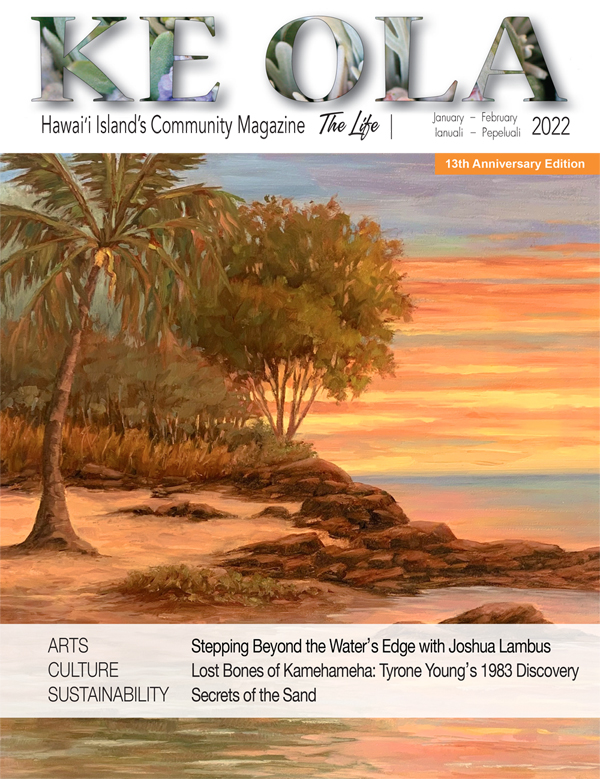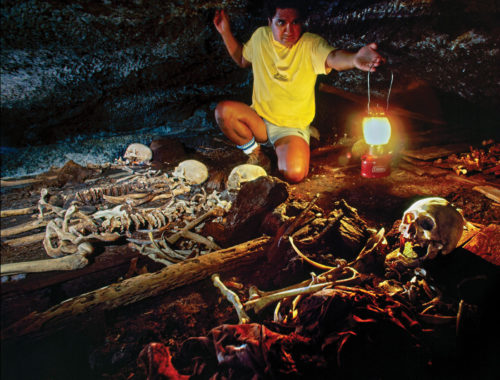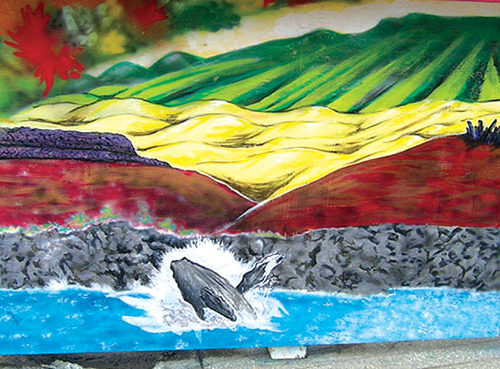
Life in the Lava: The Anchialine Habitat

By Rachel Laderman
Nestled in the cracks and dips of Hawai‘i’s rugged coastline are sparkling pools filled with tiny, darting red shrimp. These pools are just the tips of an incredible labyrinthine habitat that goes far under the lava, and is almost uniquely Hawaiian.
Hawai‘i’s relatively young volcanic fields are highly porous, with numerous fissures. On the rising tide, seawater pushes up through these cracks and fills depressions to create landlocked pools. Fresh water from uplands seeps into the cracks, tops off the water table, and adds to the wide variety of shapes and sizes of pools that move with the tides.
These partly salty, partly fresh “brackish” pools are called anchialine, from the Greek “anchialos” meaning “near the sea.” Unlike tide pools, they have no direct ocean connection.
Hawai‘i Island has by far the most anchialine pools in the world, hosting 650 of approximately 1,000 worldwide. Another 50 anchialine pools are found on Maui, Kaho‘olawe, Moloka‘i, and O‘ahu; on O‘ahu, they form in ancient limestone reefs.
Tiny Denizens

The Hawaiian name for the pools, “wai ‘ōpae” meaning fresh water (wai) shrimp (‘ōpae), shows the pools’ close association with their petite inhabitants. Two ‘ōpae species are commonly found on Hawai‘i Island. The first is Halocaridina rubra or ‘ōpae ‘ula, an algae-eating grazer, measuring around half an inch. Twice its size and less common is Metabaetaeus lohena, which sports the pincers of a carnivore. Their appearance cause the ‘ōpae ‘ula to scatter. Six other species are very rare, two of which are endangered.
“Think of anchialine pools as a window into an underground world,” says Ranger Dean Gallagher with Hawai‘i Volcanoes National Park, who has worked with these habitats for years. When the water level drops, the shrimp retreat into a maze of underground channels. This ability to travel through tiny cracks, plus their long lives (up to 20 years) and ability to go without food for months, has led to some amazing findings.
In the “Islands Under the Island”

Scott Santos, head of a molecular genetics lab at Auburn University in Alabama, was born and raised on Maui. He had ‘ōpae ‘ula on a shelf in his lab, and was curious about their genetics. So, during a visit to Hawai‘i Island in 2004, he took samples from Hilo and Kona pools. When he sequenced the ‘ōpaes’ genomes, he found unexpected differences.
In many follow-up surveys across the islands, Scott found there were 13 distinct genetic groups belonging to eight lineages—just within Halocaridina rubra—that do not intermingle at all. “Their genetic similarity means that they traveled underground. They evolved in the islands under the island,” Scott explains. They could not cross major lava flows, so on Hawai‘i Island there are different lineages within the bounds of the major rift zones.
Another amazing phenomenon is happening in the wake of loss. The 2018 Kīlauea Volcano lava flow obliterated several unique “hot spring” anchialine pools at Pohoiki. As the volcanic activity came to rest, however, a black sand beach was created and behind it, a new series of pools. Halocaridina have started popping up in this remote location. Scott thinks the Hilo population is “seeding” these new pools—from miles away the tiny Halocaridina larvae, feeding off their yolk sac as they travel through the ocean, navigate through cracks to reach the pools.
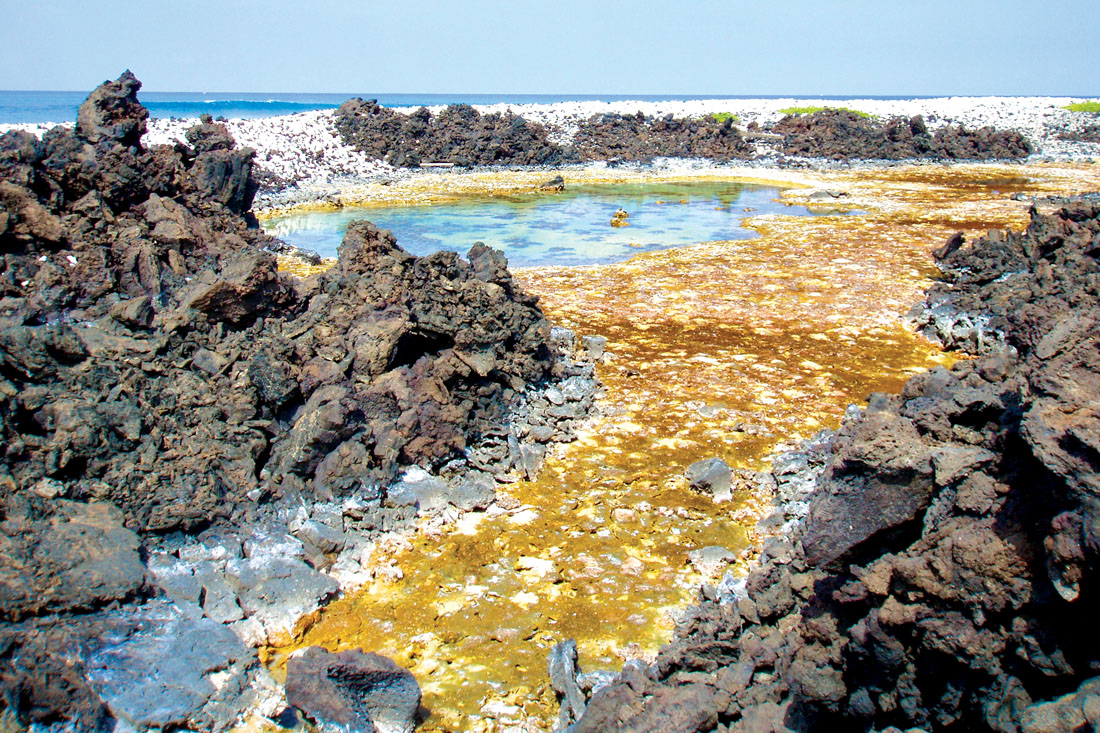
Live-Giving Pools
The mostly-fresh water of anchialine pools helped make early settlement possible. “Hawaiians knew when to gather water from the pools at their peak of freshness,” Dean says. Different pools had distinct, protected uses, including drinking, bathing, and managing ‘ōpae for bait.
‘Ōpae were important bait for attracting ‘ōpelu, a staple fish. “Native Hawaiians collected the ‘ōpae, put them in mud balls wrapped in tapa cloth, then slowly unraveled them under a canoe,” Scott says. Over time, the ‘ōpelu learned to trust and follow the canoe, so that all a fisherman had to do was lower his net and let fish swim in.
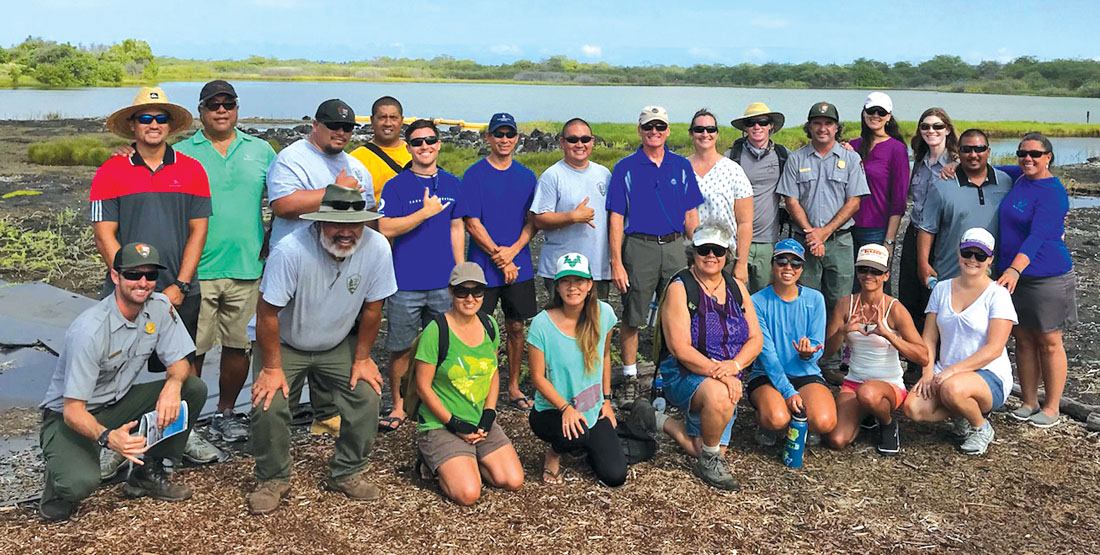
Respecting Anchialine Pools
There are numerous threats to such a vulnerable habitat: invasive animals and plants, development, pollution, and sea-level rise. The resilience of the charismatic shrimp lends the hope that they will continue to pop up, given just a crack at a chance. Here are ways you can help:
- Do not use pools for bathing—soap, shampoo, and sunscreen contaminate the water.
- Do not dispose of garbage in pools.
- Do not release fish or other aquatic life into pools.
- Do not fill in shoreline lava cracks.
- Do not harvest ‘ōpae for sale.
- To join a volunteer group to help restore pools, contact barbara.seidel@tnc.org with Hui Loko or check wildhawaii.org/calendar/ ❖
For more information: dlnr.hawaii.gov/dsp/
Rachel Laderman, Sustainable Pacific Program
Lynker LLC/NOAA Affiliate, Hawaii Island
